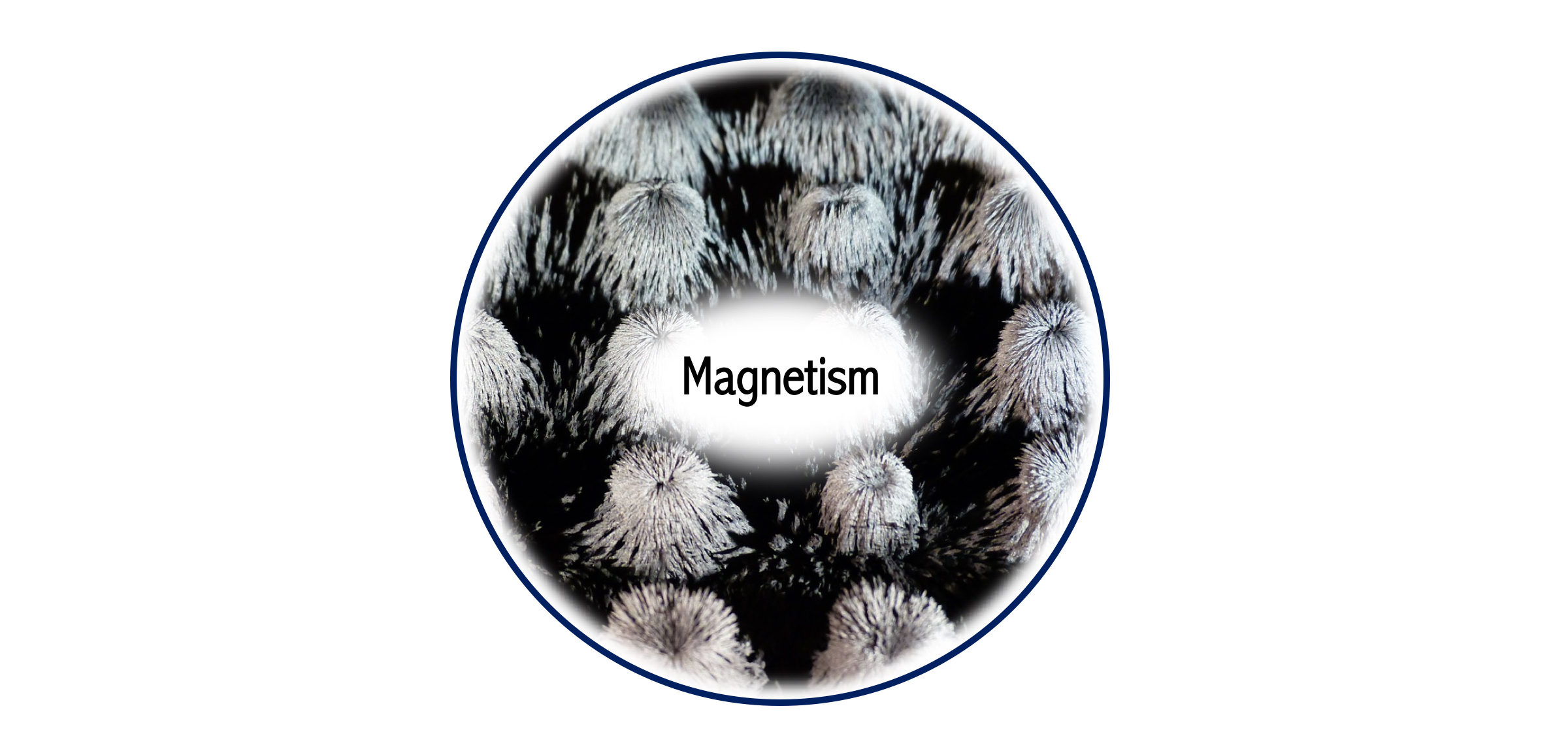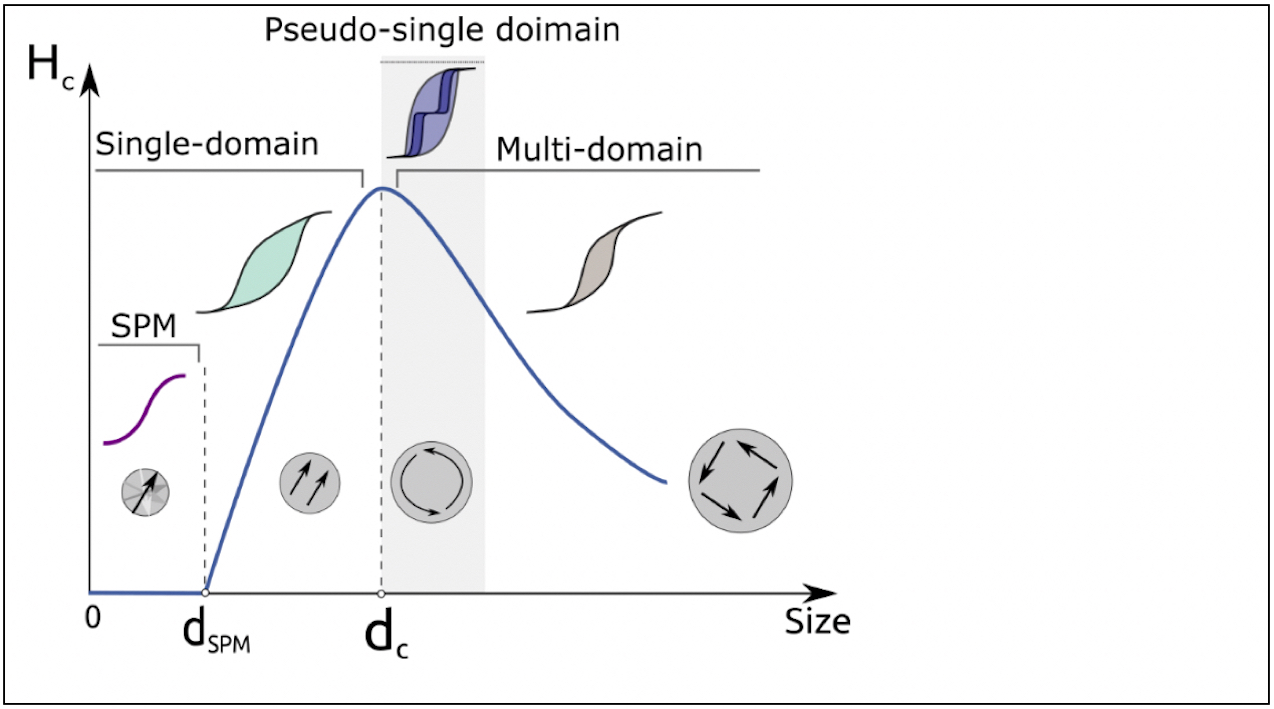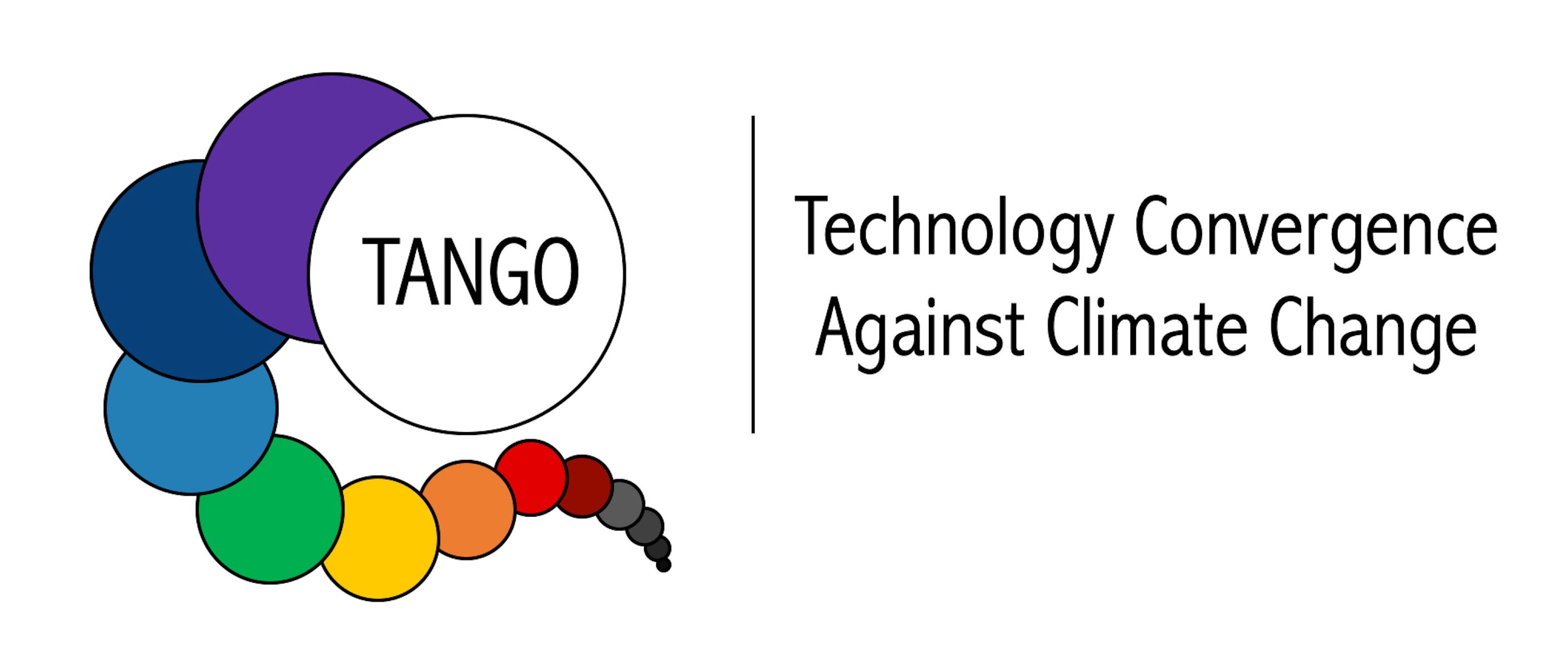
Minimization of energy provides a basis for predicting the direction of events in the universe. This is why a ferromagnet, in order to minimize its energy, is organized in a certain number of small regions, with different size and shape, called domains (i.e. uniformly magnetized regions having atomic magnetic moment oriented in the same direction). Magnetic domains have random directions so that the sum of overall domain moments is essentially zero. Two adjacent domains are separated by a transition region, called domain walls, in which the spins gradually rotate, from one domain to the other. By reducing particle size below a critical value , when the dimension of the crystal is of the same order as that of the domain wall, a magnetic mono- domain organization is energetically more favorable A magnetic mono-domain particle (MMP) can be considered as “superspin” with a supermagnetic moment, depending on the particle volume, expected in the range 103-105 Bohr magneton (µB). They are characterized by the instability of magnetization due to thermal agitation, that for isolated spherical particle results in the flip of magnetization between its antiparellel easy directions, separated by an energy barrier (∆Ea ). This phenomenon is analogous to paramagnetism but, involving super moement, it is characterized by different time and magnetization scale, and for this reason it is called superparamagnetism (Figure 1). For a fixed temperature An assembly of MMP shows superparamagnetic behavior above a certain temperature (kBT>>∆Ea), labeled blocking temperature, TB, while below this temperature (kBT<<∆Ea) magnetic properties are similar to those of the bulk material (i.e. magnetic hysteresis)1–4.

With these concepts guiding our activities, TANGO is engineering core-shell nanoparticles with a superparamagnetic inner core that, upon applying an external magnetic field, will initially separate the immobilized catalysts from the crude, and then recycle it, eventually after washing steps.
Not only we need to properly design and realized these magnetic nano carriers. TANGO will also deal with the design of magnetic trapping unit, considering the effects of its geometry, along with the magnetic filed strength, on the nano catalysts recovery efficiency.
As a consequence, nano magnetism is a key property of matter that makes affordable TANGO objectives.
GENERAL REFERNCES
- C. Cannas and D. Peddis, La Chim. e l’industria.
- G. Muscas, N. Yaacoub and D. Peddis, in Advanced Nanomaterials, eds. N. Domracheva, M. Caporali and E. B. T.-N. M. N. Rentschler, Elsevier, 2018, pp. 127–163.
- D. Peddis, P. E. Jönsson, S. Laureti and G. Varvaro, in Frontiers of Nanoscience, ed. C. Binns, Elsevier, 2014, vol. 6.
- L. Suber and D. Peddis, in Nanomaterials for life science, ed. C. S. S. R. Kumar, Wiley, Weinheim, Wiley., 2010, vol. 4, p. 431-475.
